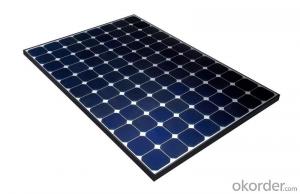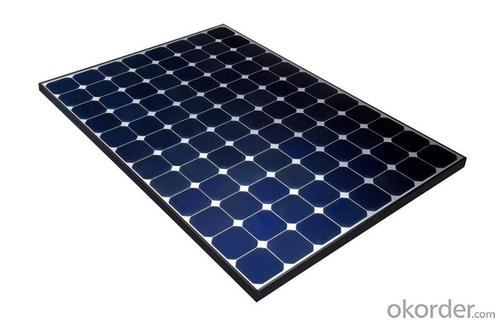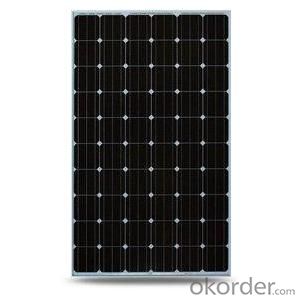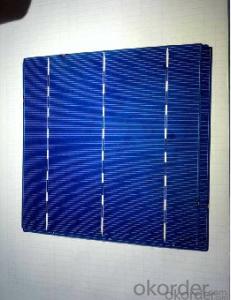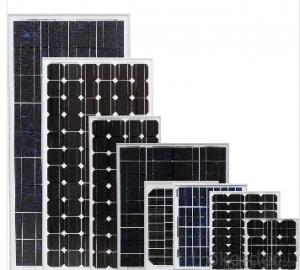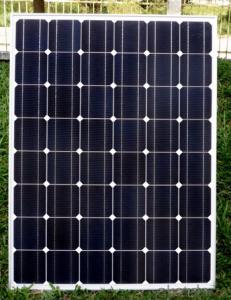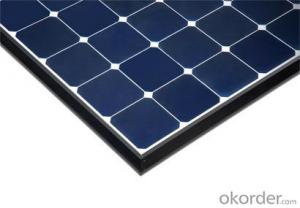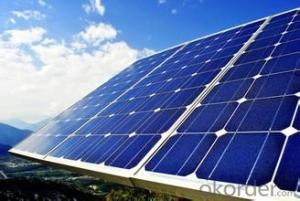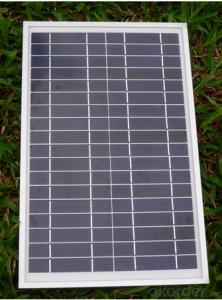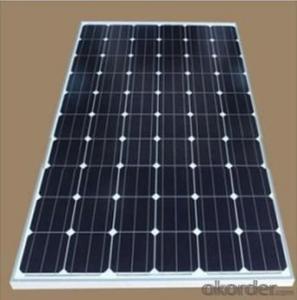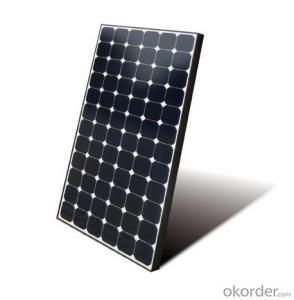USB Solar Panels - Poly Solar Panel 265W B Grade with Cheapest Price
- Loading Port:
- Shanghai
- Payment Terms:
- TT OR LC
- Min Order Qty:
- 100 watt
- Supply Capability:
- 10000 watt/month
OKorder Service Pledge
OKorder Financial Service
You Might Also Like
Specification
Poly Solar Panel 265W B Grade with Cheapest Price
Product description
A solar cell, or photovoltaic cell (in very early days also termed "solar battery"[1] – a denotation which nowadays has a totally different meaning, see here), is an electrical device that converts the energy of lightdirectly into electricity by the photovoltaic effect, which is a physical and chemical phenomenon.[2] It is a form of photoelectric cell, defined as a device whose electrical characteristics, such as current, voltage, or resistance, vary when exposed to light. Solar cells are the building blocks of photovoltaic modules, otherwise known as solar panels.
Solar cells are described as being photovoltaic irrespective of whether the source is sunlight or an artificial light. They are used as a photodetector (for example infrared detectors), detecting light or other electromagnetic radiation near the visible range, or measuring light intensity.
A solar cell, or photovoltaic cell (in very early days also termed "solar battery"[1] – a denotation which nowadays has a totally different meaning, see here), is an electrical device that converts the energy of lightdirectly into electricity by the photovoltaic effect, which is a physical and chemical phenomenon.[2] It is a form of photoelectric cell, defined as a device whose electrical characteristics, such as current, voltage, or resistance, vary when exposed to light. Solar cells are the building blocks of photovoltaic modules, otherwise known as solar panels.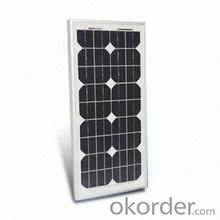
Application
Business
Home
Industry
Large project
Feature
1. A grade high efficiency solar cells.
2.TUV/UL/CE/CEC etc
3.Fast shippment
4.25 years warranty
5.OEM/ODM
Packaging
28pcs into one carton
Shipping
Material in stock can be produced (procedure 5-20days) right away after pre-payment confirmation. COSCO Mearsk MSCship to worldwide for safe shipping, don't worry about package damage or loss. It takes about 15-40 days to worldwide, Please note us your contact details include your phone number for easy contacting from shipping company officer.
- Q: I need to be able to charge a 2v 7amp battery with a solar panel. I understand that the charge controller will keep the battery from over charging/discharging, but what I don't understand is the amps.The solar panel is rated at 5watts.The solar panel comes with a 2v 3amp charge controller but will I need to buy a 7amp charge controller and replace it with that for my battery pack? Please explain. Thanks in advance.
- If it is a charge controller that is wired between the panel and the battery only, then a 3A rating is ample. The controller only has to handle the maximum current that the solar panel can output. The panel will have (or needs to have) an open-circuit voltage that is greater than about 4V in order to actually charge the battery, whose terminal voltage will rise above 2V as it charges. The panel's open circuit output voltage typically is about 7V. The 5W rating is at the maximum power point under the illumination of standard sun and at a specified temperature. That maximum power point probably is around 4V, which means the panel will deliver the following amperage to charge the battery: I = P/V = 5W/4V = 0.36A Since 0.36A is well below the 3A rating of the controller, the controller will not be overloaded when charging the battery. Some charge controllers also have terminals for connecting the load that you want to power. If that's the case, then the controller also needs to be rated to handle that load amperage or higher. If you were to connect a 6A load, then you would like to have say a 0A controller. Hope that helps.
- Q: Hey i am going to build a scale model house and demonstrate how you would use solar panels to provide energy. I am thinking of buying some kit solar panels and wiring up some lights to show how they power the home. Also i might hook up a battery in the house to show how you can store the energy. I might also have a large battery hooked up outside the house to represent a power plant that could provide emergency power. Any ideas or comments would be great. Thanks
- you have the right idea, but forget about so many batteries cause solar power replaces them. get some small solar motors and use them for ceiling fans, try some small xmas light in a box behind a picture to look like a tv screen, use the small solar motor to demo an exercise bike and use a 00 watt or better light bulb to power your solar cells in place of the sun. that would demo the idea best without the use of batteries. i really hates batteries, but i love me some solar. i am a solar engineer and i think that light is the most amazing element in our universe. solar energy was the first source of power on earth and it will be the last. oh, did i mention that it is also so very very free. in fact, solar energy is so free that one can not even buy a handful of it and one can not even steal a pocket full of it. aint that something to think about and to post on your project just for a fun fact!!
- Q: if i have a 0 Watt solar panel what does that mean. does that mean it will charge a battery 0 watts per hour? Lets say i hook this up to a car battery and use the car battery to run computer stuff. How much will this charge the battery?
- Watts okorder /
- Q: What is the principle of solar panels to convert solar energy into electricity?
- When the light is irradiated on the surface of the solar cell, a part of the photon is absorbed by the silicon material; the energy of the photon is transferred to the silicon atom, so that the electrons are moved and the free electrons are formed on both sides of the P-N junction to form a potential difference. When the circuit is used, the current will flow through the external circuit to produce a certain output power. The essence of this process is the process of converting the energy of the photon into electrical energy.
- Q: Can solar panels be used in areas with high levels of humidity?
- Yes, solar panels can still be used in areas with high levels of humidity. While high humidity can affect the efficiency of solar panels to some extent, they are designed to withstand various weather conditions, including humidity. However, it is important to note that regular maintenance and cleaning may be required to ensure optimal performance in such environments.
- Q: can this amount of solar charge these batteries.
- Well you are stating the solar panel powers but no mention of their voltage??. Yes, they should do the job. I suspect the lack of blocking diodes may be your problem, assuming you have done the homework. You have 6 battery cells at 2 volts each, that is ...err..2 volts, assuming you have them connected in series. Count the number of cells on the solar panels and maybe we have a starting point. One solar cell is 0.6 v, in this case you would need a minimum of around 30 cells (physically it will probably be 32 to make it 'square'), you need a fair bit of over- sizing in that direction. Solar panels are resistive when not illuminated so must have a blocking diode included to prevent the batteries from discharging into the solar panels at night. Check that each array has a blocking diode included, if not add them. Solar power is pretty useless unless you have loads of sunshine. You seem to have gone through a bit of trouble and expense on this one, so give me some basic facts and I will help you through it. Update 7 Dec If the batteries take 20 hours to fully charge and there are 0 hours of sun each day then the batteries will be fully charged in 2 days. The question was, can the battery be charged, answer is yes, it can. There is no mention of load. If the batteries are not charging there is something wrong.
- Q: How do solar panels withstand hail or other weather conditions?
- Solar panels are designed to be durable and withstand various weather conditions, including hail. They are made with tempered glass that is highly resistant to impact, ensuring that hailstones won't damage the panels. Additionally, the panels undergo rigorous testing to ensure they can withstand extreme weather conditions, such as strong winds and heavy snow. The frame surrounding the panels also provides stability and protection.
- Q: Do solar panels require permits for installation?
- Yes, in most cases, solar panels require permits for installation. The specific requirements and regulations vary depending on the location, but obtaining permits ensures that the installation meets safety standards and compliance regulations set by local authorities.
- Q: Can solar panels be installed on a rental property?
- Yes, solar panels can be installed on a rental property. However, it ultimately depends on the landlord's consent and willingness to invest in the installation.
- Q: The colder a solar panel gets the more efficient it seems to be. As the panel warms, it loses some efficiency. Why is this so? Please explain in a way you would expect a high school kid to understand it, as I am a high-schooler and i have to explain this to other high-schoolers.
- All PV Solar Panels are affected by heat. The hotter the solar panel, the lower the power output - but how significant is the effect. I decided to test one of our small 6V 250mA Solar Panels to find out. Solar Panel next to halogen lamp with temperature probe. Reproducing the kind of temperatures solar panels experience in hot climates is not easy on a cloudy May day in the UK, so a 50 Watt halogen office lamp was used at a distance of 55mm from the solar panel as a sun substitute. This guaranteed a constant level of light would be incident upon the solar panel ensuring the quality of the results collected.
Send your message to us
USB Solar Panels - Poly Solar Panel 265W B Grade with Cheapest Price
- Loading Port:
- Shanghai
- Payment Terms:
- TT OR LC
- Min Order Qty:
- 100 watt
- Supply Capability:
- 10000 watt/month
OKorder Service Pledge
OKorder Financial Service
Similar products
Hot products
Hot Searches
